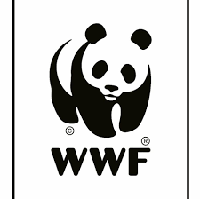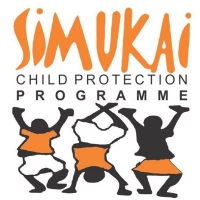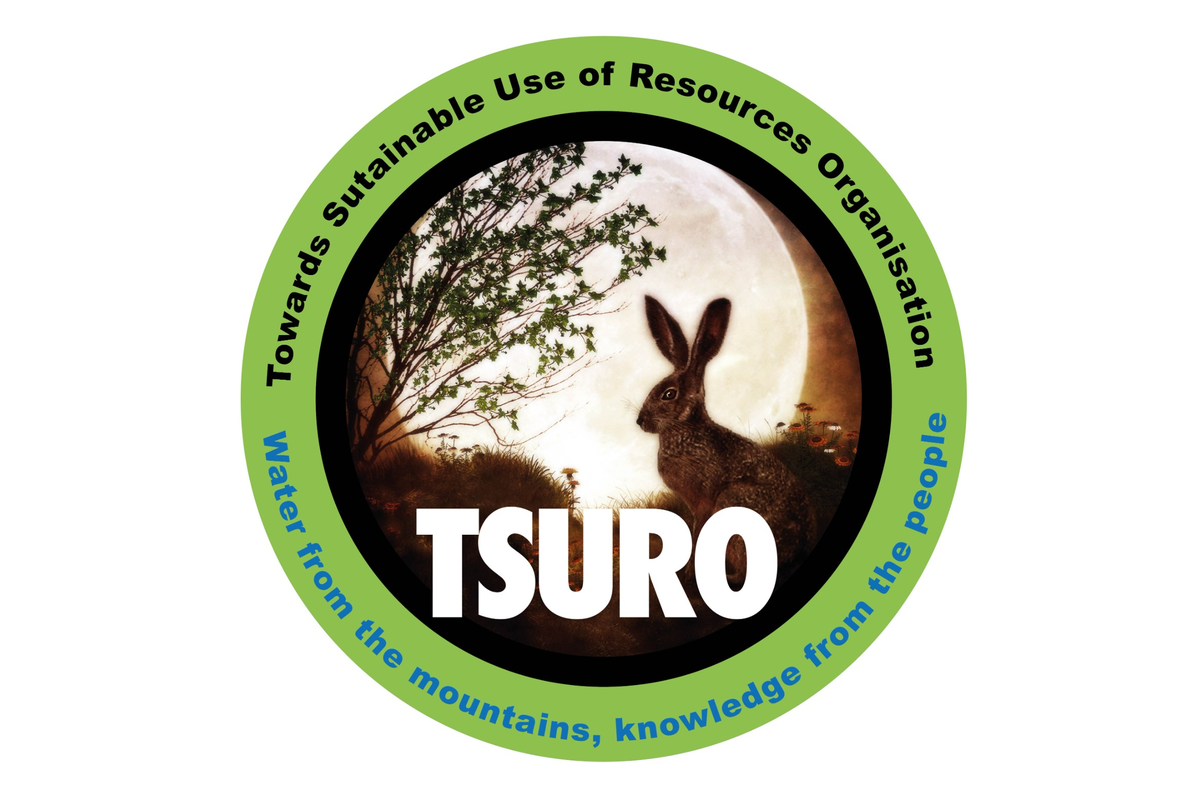Consultancy - Development of a targeted Environmental and Social Impact Assessment (ESIA) and the subsequent Environmental and Social Management Framework (ESMF) for Hwange-Sanyati Biological Corridor
Consultancy, Research Jobs
- WWF Zimbabwe
- Expires 30 Jun 2022
- Bulawayo
- Internship
Job Description
WWF often pursues long-term, rolling projects that comprise a set of action towards sustainable development and conservation natural landscapes. WWF’s Environmental and Social Safeguards Framework (ESSF) provides an institutional mechanism to manage the environmental and social risks associated with conservation initiatives. The ESSF helps deliver better conservation outcomes, and aims to enhance the social well-being of local communities in landscapes of operation. The ESSF aims to improve the design, implementation, monitoring and evaluation of WWF activities by identifying and addressing environmental and social risks, mindful of the different challenges and needs in different parts of the world. The ESSF process supports the systematisation of good governance practices to achieve respect of human rights, transparency, non-discrimination, public participation, and accountability, in the context of conservation work implemented or supported by WWF. WWF’s ESSF has been designed to meet the specific needs of WWF global network and related standards obtaining in landscapes of operation.
C. Scope of application of WWF ESSF in Zimbabwe
Safeguards play a vital role in achieving WWF’s vision to build a future in which people live in harmony with nature. Social and Environmental Safeguards Framework (ESSF) guide how WWF and its partners engage local communities to plan, improve and protect their lives, rights and livelihoods while conserving nature and wildlife. Specific to this assignment, WWF interventions on the Zimbabwe side of the KAZA landscape (Hwange-Sanyathi Biological Corridor) are expected to yield positive environmental and social outcomes. The implementation of some conservation activities may potentially result in unintended negative impacts, which makes it crucial to effectively apply safeguards to identify, avoid and mitigate such impacts. Assessment of environmental and social impacts and the subsequent preparation of appropriate mitigation plans in a participatory manner, is an essential part of this ESSF process. WWF uses the ESSF process to identify, avoid and mitigate these risks, uphold human rights, and ensure all conservation projects deliver better outcomes for communities and nature.
D. Objectives
The objectives of this assignment are three fold and include
1. To conduct a gap assessment and review the available documentation provided, including Strategies, work plan documents; existing ESIAs conducted in the landscape and the completed Safeguard Screening Tool (SST), Following the analysis of this documentation, the Consultant will: identify gaps in baseline information, the adequacy of any proposed mitigation (about achieving safeguards compliance), prepare an inception report (with methodology and work plan). The inception report will be discussed with the WWF team, amended, and finalized
2. To conduct a targeted Environmental and Social Impact Assessment (ESIA) This will help fill the gaps in information identified in the gap assessment report and integrate the views and feedback provided by stakeholders about the potential negative social and environmental impacts and the appropriate mitigation measures. The impact assessment shall be undertaken by the Consultant in a structured manner, along with the relevant national legislation and the requirements of the relevant WWF E&S Safeguard Standards (ESSS), with a particular focus on, but not limited to; Involuntary Restriction of Access; Indigenous Peoples; Community Health, Safety, and Security; on Protection of Natural Habitats; Physical and Cultural Resources and any known risks and issues in the Hwange Sanyathi Biological Corridor (HSBC) Landscape.
3. To develop the subsequent Environmental and Social Mitigation Framework (ESMF) that supports all WWF programming in the HSBC Landscape to comply with WWF Network Safeguard Standards.
E. Landscape description
Zimbabwe is one of the five countries implementing the The Kavango Zambezi Transfrontier Conservation Area (KAZA –TFCA) treaty and program with approximately 80 000km2 under the Zimbabwe side of KAZA. KAZA is one of the country`s important biodiversity area with tourism as the main economic activity within the landscape. This landscape is home to two geographical and viable elephant population ranges namely the Hwange-Matetsi and Sebungwe complex sub-populations and collectively known as Hwange Sanyathi Bilogical Corridor (HSBC). The HSBC, encompasses three national parks, two safari areas, six gazetted forest areas, four communal lands and private and/or settled land such as the Gwayi conservancy. It embraces the following some key Communal Areas Management Programme for Indigenous Resources (CAMPFIRE) districts including rural districts: Binga, parts of Bulilima, parts of Gokwe North & South, parts of Hurungwe, Hwange, parts of Kusile, Nyaminyami and Tsholotsho. The area is home to the second largest elephant population in KAZA TFCA holding nearly 57 000 individuals. The HSBC landscape therefore forms a crucial part of two major KAZA Wildlife corridors. WWF, through its three Country Offices in Namibia, Zambia and Zimbabwe, has operated in the landscape for over 20 years and has been an active supporter of KAZA since inception. WWFs goal for KAZA of ‘A connected, resilient, economically viable landscape for people and nature’ supports the KAZA TFCA vision of ‘Establishing a world-class transfrontier conservation area and tourism destination in the Okavango and Zambezi river basin regions within the context of sustainable development’ that is based upon a concerted, five-country effort to harness the region’s rich natural resources to promote economic development through conservation and tourism.
WWF’s efforts are to be directed by a 5-year strategic plan (2021 -2025), built around three pillars of securing an ecologically connected landscape, improving rural community resilience and to help develop a viable and sustainable wildlife-based economy supported by an environmentally sensitive urban environment and sound regional planning. Working with and through partners, WWF Zimbabwe implements a wide range of strategic agriculture, wildlife, forestry and community livelihoods programmes through various stakeholders including Government Agencies, private sector, civic organisations, bilateral agencies and communities to achieve its conservation ambition within the landscape. WWF and its partners are implementing conservation initiatives tailored to combat illegal killing and trafficking of wildlife products, reduce human wildlife conflict, enhance sustainable agriculture practices, community livelihoods and participation in wildlife management from the buffer communities. WWF operates in 5 of the 12 active CAMPFIRE districts supporting and strengthening the community-based natural resources management program with support from Zimbabwe Parks and Wildlife Management Authority(ZPWMA) and the respective Rural District Councils. WWF Zimbabwe’s recent support has been in Hwange National Park and Chizarira National Parks along with the surrounding Binga, Bulilima, NyamiNyami, Tsholotsho and Hwange Rural District Councils.
Duties and Responsibilities
Scope of work
COVID-19: -The Consultant and WWF will regularly review the COVID-19 situation and will jointly agree when it is safe for any field-based work to take place. The decision will be based on adequate assurance that the risk of COVID-19 transmission has been minimized for any communities or other stakeholders, the Consultant team and WWF staff.
Confidentiality: - In order for the Consultant to fulfil the ToR, confidential documents will be made available for review. The Consultant will therefore be required to sign and abide by a non-disclosure agreement (NDA) to be included with the formal contract.
G. Tasks
Section A: Desktop review gap analysis.
Task 1: Kick-off meeting, document review, gap analysis, adequacy assessment and work-plan.
● A kick-off meeting with relevant WWF staff members, designed to provide the Consultant with the context for the tasks and documents to be reviewed.
● Review of all available documents provided by WWF, including:
o Strategies, planning documents and management plans,
o ESSF Standards and supporting guidance notes,
o the completed Safeguard Screening Tool (SST), including comments provided during the internal peer-review,
o the E&S Categorization Memo, which assigns the risk category, summarizes the impacts and related safeguards triggered as a result, specifies requirements for the next stage (further impact assessment, mitigation planning to be included in the ESSF).
o situation analysis, socio-economic assessment(s), participatory mapping(s), tenure assessment(s) etc.
● Following the analysis of this documentation, the Consultant will:
o identify gaps in baseline information.
o assess the adequacy of any proposed mitigation (in relation to achieving safeguards compliance).
o prepare an inception report (with methodology and workplan). The inception report will be discussed with the WWF team, amended and finalized.
o Develop a work plan, with accompanying detailed budget, will form the basis of the detailed terms of the assignment and shall be approved by WWF prior to starting the work. The work plan will be routinely reviewed with WWF during the assignment and adapted to reflect any change of circumstance.
Task 2: Carry out a stakeholder analysis and develop a stakeholder engagement plan for the ESIA-ESMF.
● The Consultant will draw on previous stakeholder engagement analyses and/or plans already developed by the WWF team as appropriate. The objective of the stakeholder consultations is to discuss the potential social and environmental impacts of WWF’s activities as part of the ESIA development and the identification of appropriate mitigation measures as well as the institutional arrangements for the implementation of the ESMF.
● The Consultant will also analyse national regulatory frameworks on land tenure, including traditional land rights and obligations to, and use of, natural resources by different local communities.
● The selection of field visit sites/communities/park employees to be consulted will be evaluated and jointly established by the Consultant and the WWF project team, based on the following criteria:
o Area of influence: the specific areas within HSBC landscape where WWF has activities or exerts influence.
o Accessibility: of villages/communities, including mobility of community members to reach any proposed consultation location.
o Ethnicity: differences in culture and ethnic identity, including recognised, self-identified or potential indigenous people’s status.
o Livelihoods: differences in the main livelihood strategies – e.g. agriculturalist, agro-pastoralist, pastoralist, fisherperson.
o Dependency: dependency of household livelihoods on natural resources or more generally on the areas impacted by WWF's work.
o Impact: difference in types of positive and negative impacts from WWF activities and their spatial distribution.
o Composition: particular attention will be paid to different sub-groups inside communities, e.g. women, elders, and ethnic identity (within multi-ethnic communities).
● Institutional stakeholders relevant in the context of the environmental and social safeguarding should also be analysed and included in the Plan. These will include, but are not limited to, agencies, administrations, institutions and NGOs related to wildlife and water resources management; forestry and agriculture; social welfare; health and protected areas management.
● The Consultant will detail in the proposal the methodology and any other criteria adopted for the identification of the stakeholders to engage.
Section B: Field-work ESIA and ESMF.
Task 3: Carry out field visit(s) and consult with stakeholders, based on the stakeholder engagement plan.
● Site visits and field work shall be carried out in cooperation with the WWF Project staff, and any other relevant authorities as appropriate.
● Information shall be obtained from local communities, using to the extent possible in the scope of the mission, participatory rural appraisal methods based on a mix of qualitative and quantitative data collection techniques, including focus group discussions.
● During the site visits particular attention should be paid to the local public views on environmental, cultural heritage and social effects that could be/are imposed by WWF activities as they are already observable on the ground.
Task 4: Development of the targeted ESIA
● The process of developing the targeted ESIA will help to fill the gaps in information identified in the inception report and integrate the views and feedback provided by stakeholders in relation to the potential negative social and environmental impacts, as well as the appropriate mitigation measures.
● The impact assessment shall be undertaken by the Consultant in a structured manner, along the relevant national legislation and the requirements of the relevant WWF E&S Safeguard Standards (ESSS),
Task 5: Field visit(s) and engagement with stakeholders to validate the findings of the ESIA and further discuss the mitigation measures and institutional arrangements for the ESMF.
● WWF will organise and manage this stakeholder consultation process and provide the comments/results to the Consultant. The Consultant will work with WWF to prepare consultation materials (questionnaires, activities and other appropriate supporting materials) and plan the consultations.
Task 6: Drafting the ESMF
● The ESMF serves as a framework for managing and mitigating the environmental and social risks and impacts associated with implementing WWF’s activities within the HSBC landscape. Its content will depend on the extent to which issues have been identified during the documentation review, the field visit and the engagement with stakeholders.
● To prepare the ESMF, the Consultant will:
(a) propose a set of mitigating actions to address potential adverse impacts highlighted by the earlier steps;
(b) determine requirements (e.g. in terms of capacity, partners and resources) that need to be in place to ensure that responses are effective and timely;
(c) describe the means for meeting those requirements (including a detailed budget); and
(d) an estimate of the time period required for the mitigating action to become effective and a recommendation for the frequency of status monitoring and review
● The ESMF shall be developed in close cooperation with the WWF Project staff.
H. Key Deliverable
● Inception report with detailed work plan, methodology and costs.
● Stakeholder analysis and engagement plan (including checklists, questionnaires/interview guides/guiding questions for assessing potential impacts and identifying mitigation measures)
● ESIA with annexes [in English] (including a non-technical summary)
● ESMF with annexes [in English] (including a non-technical summary)
● Summary report of stakeholder engagement activities and how their views influenced the ESIA/SIA and ESMF.
All draft versions of the developed documents will be reviewed by specified safeguards expert(s) and other WWF staff, with review comments duly considered by the Consultant and informing the final versions of the outputs. After verbal presentations and approval of final documents, the Consultant shall submit the final versions in PDF and Word format.
Project management :- The Consultant shall manage tasks and team members in order to meet the specifications of this ToR. Routine progress review meetings with the WWF Project/Task Manager (and other WWF staff as required) will be scheduled.
Core project management include:
a) Management of the Consultant’s team;
b) Communication activities with the WWF key contacts, and other parties as required;
c) Regular reporting on schedule, budget and progress against the ToR;
d) (For Task 3): health, safety, security and logistical planning.
Schedule and deliverables: - The Consultant will submit as part of the proposal a detailed work plan and schedule, including timelines for draft and final versions of deliverables as required to meet this ToR.
NB:- The work plan and schedule for Tasks 1-2 will be assessed and submitted as a stand-alone (for desk based work), and the follow-up tasks (Tasks 3-6) submitted as a separate section.
All draft versions of the outputs specified in this ToR will be reviewed by the E&S safeguards team at WWF and the HSBC landscape project team. Based on the provided review and the comments the final versions will be developed. Requested changes shall be duly considered by the Consultant. After approval of final documents, the Consultant shall submit the final versions in PDF and Word format.
Qualifications and Experience
The project team proposed by the Consultant or firm have to reflect the scope of services and demonstrate excellent technical and professional qualifications. The Consultant shall provide a description of tasks to be performed by each team member as well as details on the selection and experience of the proposed members with regard to their tasks. WWF anticipates that proposed team members will include local experts who are nationals with (1) sound expertise of the country legal context and (2) personal knowledge of Matabeleland North Province and the communities that reside within it.
The Consultant shall provide updated curricula vitae (CV) of the proposed staff. Key staff should have adequate education, professional experience, language skills and experience in the region/ with similar tasks. Please note that key staff presented in the Consultant’s proposal may not be replaced without the prior approval of WWF.
Work-plan and budget: - The Consultant shall estimate the human and other resources that will be required to complete Tasks 1-6. Due to the nature of the consultant (initial gap assessment and follow-up field work), the budget estimate and work-plan for Tasks 1-2 can be assessed and submitted as a distinct sub-budget (for desk based work) and the remaining tasks (Task 3-6) should be submitted as a separate section. The financial offer(s) shall include all costs for elaboration of works, as described above, including travel costs.
Duration and location of the assignment :-It is anticipated that the consultancy submission will breakdown timelines for Tasks 1-2 and the follow-up and related tasks (3-6). The consultant will report directly to the Landscape Lead Personnel and/or Country Director for WWF Zimbabwe.
How to Apply
Request for proposal: -
On the basis of this ToR, the Consultant should prepare a proposal that covers:
● Proposed tasks and outputs (clearly indicating any proposed approaches or outputs that differ from the ToR);
● personnel including time allocation for the assignment
● Tentative work schedule (activities and milestones);
● Amount of resources/time required
● Cost estimate based on average day rate and expenses
● Agreement/readiness to sign a Non-Disclosure Agreement.
Interested consultants should send in their CVs, cover letter, technical and financial proposal (not exceeding 20 pages) to hrmanager@wwf.org.zw. Email header should include the words “WWF Environment and Social Safeguards (ESSF) Consultancy for HSBC Landscape”.





